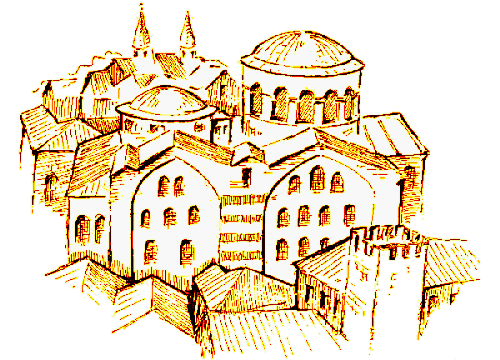|
|
Houses and cities |

Archaeological evidence shows that two types of houses existed in the late Roman period: apartments in multi-storeyed buildings and private residences. Private residences were of the peristyle type, with the rooms built around a courtyard. From written sources we learn that five-storeyed buildings continued to exist in the following centuries, at least in Constantinople. Explicit laws regulated the construction of new houses or the alteration of older ones, so that private buildings would not disturb neighbours or street life. Buildings were of modest quality, and very often older architectural elements were reused not only in private houses, but also in churches. The rooms were small and irregular and the interior open space very limited.
Not only houses, but also cities changed significantly in the centuries that followed the Roman period. The large public space with the theatre, the marketplace and the circus, the heart of Graeco-Roman city life, eventually disappeared under unsystematically erected private houses and small workshops. The ancient city planning, based on the gridiron system ceased to be in use; investigated cities of the 10th and 11th centuries do not follow any specific building arrangement.
© 1998 Oxfordshire Museum Service, Setúbal Museums and the Benaki Museum